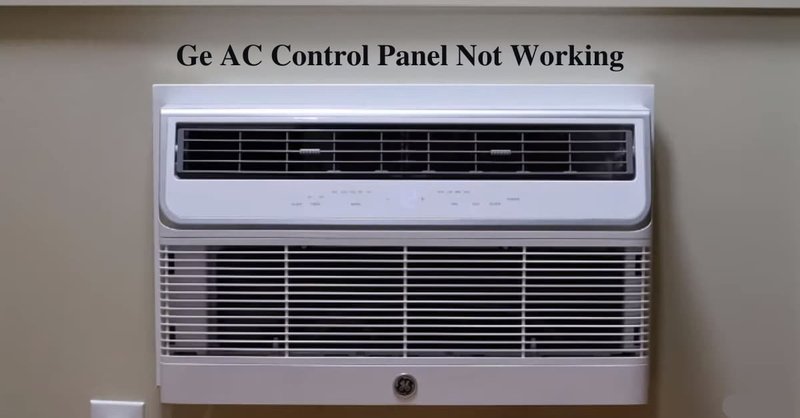
Think of your air conditioner as a complex but orderly machine, like a car. If you don’t take care of it, small problems can spiral into bigger ones, much like a tiny oil leak could lead to engine failure if not addressed. Not fixing the OE error might not seem like a big deal at first. Yet, over time, you could find your air conditioner struggling to keep your home cool or even breaking down altogether.
Understanding the OE Error Code
The OE error code stands for “Overflow Error,” which suggests that your air conditioner is having issues with its drainage system. Here’s the deal: air conditioners naturally collect water as they cool the air, and this water usually drains out smoothly. Imagine this process as a river flowing downstream. Now, what if that river gets blocked? The water backs up, right? Similarly, if your GE air conditioner’s drainage system is clogged or malfunctioning, the collected water can’t escape.
Why does this happen? Often, blockages in the drainage pipe or a malfunctioning pump are the culprits. These parts are essential for directing the water away from the unit, much like gutters on a house prevent rainwater from pooling. Not addressing this error can eventually lead to water overflow, potentially damaging your home and the air conditioner itself.
Now, you might be wondering: “What else could go wrong?” The OE error may also indicate that the float switch, which detects the water level in the tray, is signaling an issue. Maybe it’s jammed or simply has gone bad. If left unchecked, this could cause the unit to shut down to prevent further damage, leaving your home without the cool comfort you crave.
Consequences of Ignoring the OE Error
Let’s break down what could happen if you decide to ignore this pesky OE error. First off, prolonged water accumulation inside your air conditioner could lead to mold growth. Picture a damp, dark environment—perfect for mold. Once mold starts to grow, not only does it affect the efficiency of your unit, but it also poses health risks to you and your family. Breathing in mold spores is harmful, especially for those with allergies or asthma.
Another consequence involves the risk of electrical damage. Water and electronics are a dangerous mix. Ignoring the OE error could lead to water getting into the electrical components of your air conditioner, resulting in short circuits or permanent damage to the unit. This is like letting rainwater seep into a battery-powered device—it’s bound to malfunction.
Lastly, let’s talk about efficiency. An air conditioner with a drainage issue struggles more to cool your space, and efficiency takes a hit. This means higher energy bills because your unit is working harder than it should. It’s like running a marathon in the wrong shoes—uncomfortable and inefficient. Fixing the OE error in time can save you from these headaches later.
Steps to Fix the OE Error
Feeling determined to tackle this issue? Here’s the good news: addressing the OE error code can sometimes be a straightforward DIY fix. Picture yourself as a detective, tracking down the source of the blockage. Start by turning off the unit and inspecting the drainage pipe for visible clogs. This step is crucial, as a regular blockage is often the most common cause of the OE error.
If the pipe is clear but the error persists, it might be worthwhile to look at the float switch. Carefully check for any obstructions or damages. Replacing a faulty float switch might sound complicated, but with the unit’s manual and a little patience, it’s a manageable task. Think of it as changing a lightbulb that just requires an extra step or two.
Sometimes, it’s about knowing when to call in the pros. If your attempts don’t resolve the error, it might be time to contact a professional technician. They have the right tools to handle more complex repairs and ensure your unit is back to optimal working condition. Remember, preventative maintenance can save you money and frustration in the long run.
Preventative Tips to Avoid Future Errors
Preventing the OE error from reoccurring is all about routine maintenance. Imagine your air conditioner like a garden—regular weeding keeps plants healthy. Start by scheduling regular check-ups, ideally before the cooling season kicks in. A technician can clean the drainage system and ensure all components are functioning correctly.
Additionally, regularly clean or replace the air filters in your unit. Clean filters mean efficient airflow, reducing the chance of moisture buildup. It’s like wearing a freshly laundered shirt—everything breathes easier. Finally, ensure your unit is installed at the right tilt to facilitate proper drainage, preventing water from pooling inside.
In conclusion, while the OE error might seem minor at first glance, tackling it head-on is crucial for a long-lasting and efficient air conditioner. Regular maintenance and timely fixes can keep your cooling system running smoothly, ensuring comfort for many summers to come.